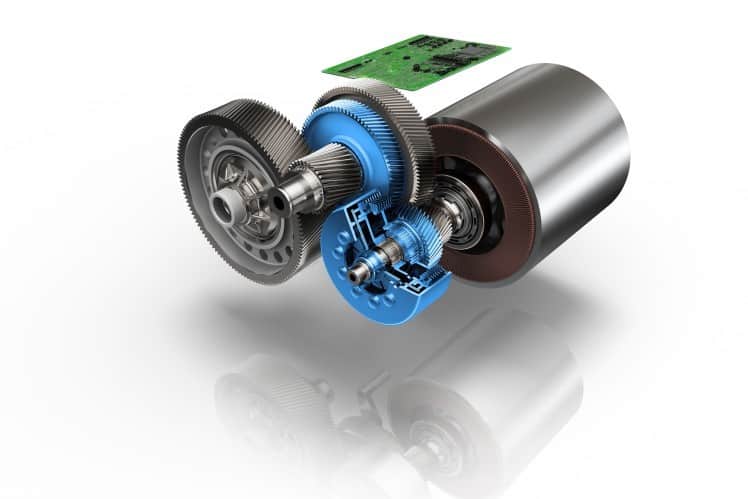
“Until recently, vehicle manufacturers have had to choose between a high initial rate of acceleration and a higher top speed for electric propulsion systems,” says Bert Hellwig, head of E-Mobility at the ZF Group in Germany. With a 2-speed transmission, ZF is tackling these conflicting objectives and is enhancing the scale of efficiency.
Current battery-powered electric vehicles do not require a conventional manual gearbox. One forward gear, one reverse gear, the rest is done by the extremely flexible electric motor. Yet the generator also has speed ranges where the efficiency is better or even worse. This is where ZF comes in with its new 2-speed transmission. ” Each percent of efficiency within the efficiency scale,” says Hellwig, “results in two percent more range. ”
Up to five percent more range
In order to substantially optimise efficiency, ZF also developed its own propulsion unit with a maximum output of 140 kW. According to ZF, a drivetrain with this combination of electric motor and 2-speed transmission has a lower energy consumption, which in turn leads to a range increase of up to five percent compared to a single-stage unit.
According to ZF, a drivetrain with this combination of electric motor and 2-speed transmission has a lower energy consumption, which in turn leads to a range increase of up to five percent compared to a single-stage unit.
The gear shift for this variant is made at 70 km/h. Other gearshift strategies are feasible. In combination with digital map data and GPS, the vehicle would be able to detect, for instance, how far away the nearest free charging station is and is able to switch to Eco mode in advance.
More effective gear shifts would also be possible when it comes to demanding landscapes, the motorway or cross-country journeys.
